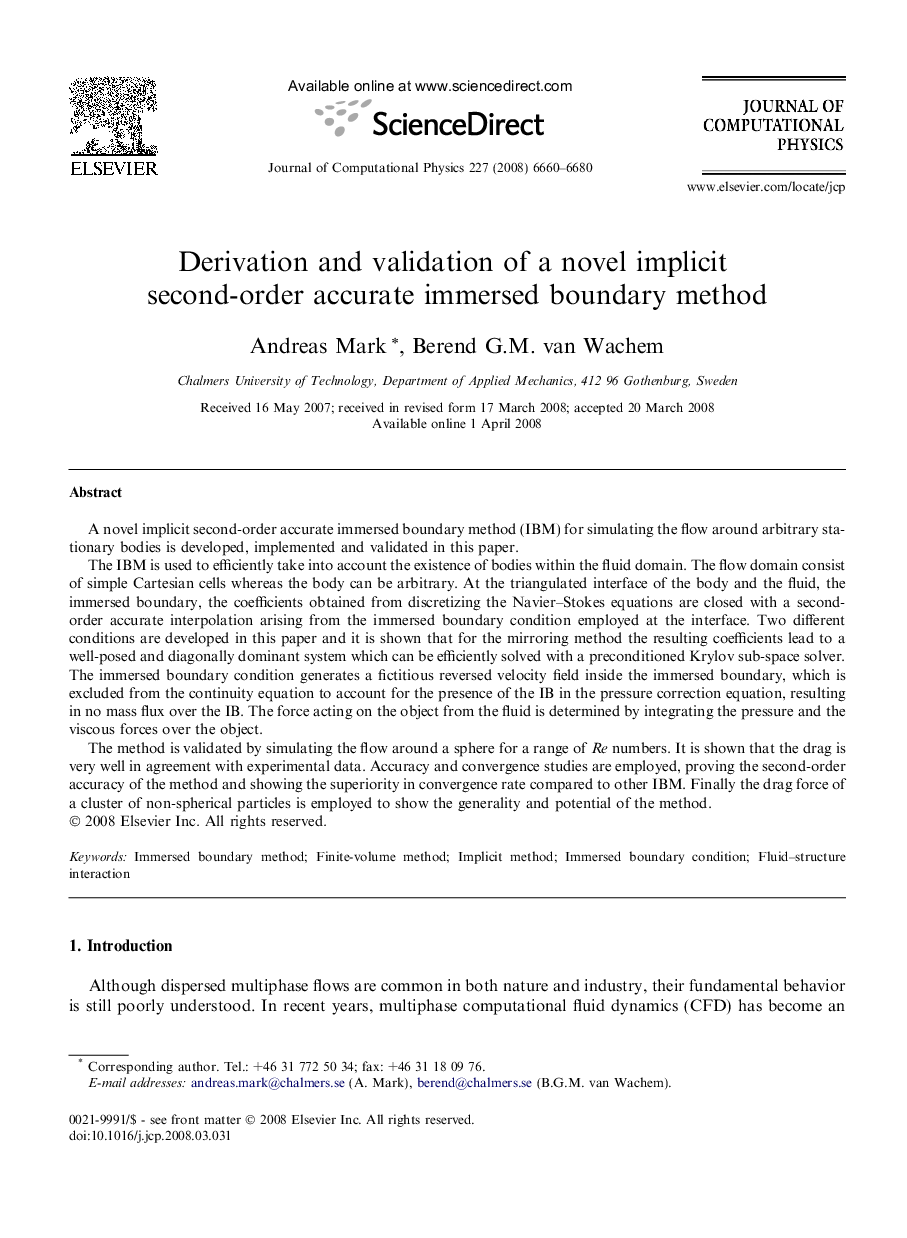| کد مقاله | کد نشریه | سال انتشار | مقاله انگلیسی | نسخه تمام متن |
|---|---|---|---|---|
| 521979 | 867803 | 2008 | 21 صفحه PDF | دانلود رایگان |

A novel implicit second-order accurate immersed boundary method (IBM) for simulating the flow around arbitrary stationary bodies is developed, implemented and validated in this paper.The IBM is used to efficiently take into account the existence of bodies within the fluid domain. The flow domain consist of simple Cartesian cells whereas the body can be arbitrary. At the triangulated interface of the body and the fluid, the immersed boundary, the coefficients obtained from discretizing the Navier–Stokes equations are closed with a second-order accurate interpolation arising from the immersed boundary condition employed at the interface. Two different conditions are developed in this paper and it is shown that for the mirroring method the resulting coefficients lead to a well-posed and diagonally dominant system which can be efficiently solved with a preconditioned Krylov sub-space solver. The immersed boundary condition generates a fictitious reversed velocity field inside the immersed boundary, which is excluded from the continuity equation to account for the presence of the IB in the pressure correction equation, resulting in no mass flux over the IB. The force acting on the object from the fluid is determined by integrating the pressure and the viscous forces over the object.The method is validated by simulating the flow around a sphere for a range of Re numbers. It is shown that the drag is very well in agreement with experimental data. Accuracy and convergence studies are employed, proving the second-order accuracy of the method and showing the superiority in convergence rate compared to other IBM. Finally the drag force of a cluster of non-spherical particles is employed to show the generality and potential of the method.
Journal: Journal of Computational Physics - Volume 227, Issue 13, 20 June 2008, Pages 6660–6680